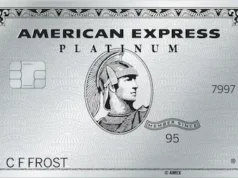Getting a credit card isn’t just about filling out an application and waiting for luck to strike. Banks and issuers carefully evaluate each applicant’s financial profile before granting approval. Understanding how that process works — and preparing in advance — can dramatically increase your odds of success.
This guide breaks down everything you need to know about how to get a credit card approved, from building your credit score and managing debt to choosing the right card for your financial situation.
1. Understand What Issuers Look For
Credit card companies evaluate several key factors when deciding whether to approve your application. The main ones include:
- Credit score: A snapshot of your overall creditworthiness.
- Payment history: Whether you pay your bills on time.
- Income: Your ability to repay what you borrow.
- Debt-to-income ratio: How much debt you carry compared to what you earn.
- Credit history length: The age of your accounts and past borrowing behavior.
In short, issuers want to know one thing: Can you manage credit responsibly? The stronger your profile, the more likely you’ll get approved.
2. Check Your Credit Report Before You Apply
One of the smartest things you can do before applying is to check your credit report. You’re entitled to one free copy per year from each of the major credit bureaus — Equifax, Experian, and TransUnion — through AnnualCreditReport.com.
When you review your report:
- Look for errors or outdated accounts that may hurt your score.
- Make sure your personal information is accurate.
- Verify that all your open credit lines are legitimate.
If you find mistakes, dispute them immediately. Even small corrections can improve your approval odds.
3. Know Your Credit Score and What It Means
Your credit score — typically ranging from 300 to 850 — plays a central role in approval decisions.
| Credit Score Range | Category | Likelihood of Approval |
|---|---|---|
| 750–850 | Excellent | Very high |
| 700–749 | Good | High |
| 650–699 | Fair | Moderate |
| 550–649 | Poor | Low |
| 300–549 | Very poor | Very low |
If your score is below 700, you can still get approved, but it’s best to focus on cards designed for fair or limited credit rather than premium rewards cards.
4. Choose the Right Type of Card for Your Profile
One of the most common mistakes people make is applying for the wrong card. Each credit card caters to a specific financial situation:
- Secured credit cards: Great for beginners or those rebuilding credit. They require a refundable deposit that serves as collateral.
- Student credit cards: Designed for college students with little to no credit history.
- Cashback and rewards cards: Best for individuals with established credit and stable income.
- Low-interest or balance transfer cards: Ideal for those looking to consolidate debt or make large purchases.
If you’re unsure, start with a secured card or a low-limit unsecured card. After 6–12 months of responsible use, you’ll be eligible for upgrades.
5. Provide Proof of Stable Income
Your income helps issuers assess whether you can handle additional credit. Be prepared to provide documentation such as:
- Pay stubs or salary slips
- Bank statements
- Tax returns (for self-employed applicants)
Even part-time income or freelance earnings can count, as long as they’re consistent. A strong, stable income stream can offset other weaknesses in your profile — such as a shorter credit history.
6. Keep Your Debt Levels Low
Your credit utilization ratio — the percentage of available credit you’re using — heavily influences approval decisions.
Try to keep your utilization below 30% across all cards. For example, if your total credit limit is $3,000, avoid carrying a balance higher than $900.
Pay down existing balances before applying for a new card. Not only will this boost your credit score, but it also shows issuers that you manage debt responsibly.
7. Don’t Apply for Too Many Cards at Once
Each time you apply for a credit card, the lender performs a hard inquiry on your credit report. Too many inquiries in a short time frame can lower your score and signal financial distress.
To avoid this:
- Limit applications to one or two cards at a time.
- Space them out over several months.
- Research eligibility criteria before applying.
Applying strategically increases your odds of approval and protects your score.
8. Consider a Secured Credit Card if You’ve Been Denied
If you’ve been rejected multiple times, don’t get discouraged. Start rebuilding your credit with a secured card.
These cards require a deposit — usually between $200 and $500 — which becomes your credit limit. They function just like traditional cards, and most issuers report your payments to the credit bureaus.
After six months of consistent, on-time payments, you can often upgrade to an unsecured card or get your deposit refunded. Popular secured options include the Capital One Secured Mastercard and the Discover it® Secured Card.
9. Strengthen Your Credit Profile Before Applying
If your score isn’t where you want it to be, take a few months to strengthen it before submitting a new application.
Here’s how:
- Pay all your bills on time. Payment history is the biggest factor in your score.
- Reduce outstanding balances. The less you owe, the better.
- Keep old accounts open. A longer credit history helps your score.
- Avoid new loans temporarily. Too much new credit can raise red flags.
- Monitor your credit regularly. Apps like Credit Karma or Experian Boost make it easy to track progress.
Even a small improvement in your score can make a major difference when applying for a new card.
10. Double-Check Your Application Details
Simple mistakes — like mismatched addresses or missing income data — can trigger an automatic denial.
Before submitting your application:
- Ensure all personal details are correct.
- Match your name and address exactly as they appear on your credit report.
- Include accurate income information.
Completing your application carefully helps prevent unnecessary rejections.
11. Be Patient and Persistent
If your application is denied, don’t take it personally. Ask the issuer for the reason — they’re required by law to provide it. Use that feedback to address weaknesses, improve your credit, and reapply after three to six months.
Responsible financial behavior always pays off. Once you build a stronger profile, your approval odds will improve dramatically.
12. Final Thoughts: Preparation Is the Key to Approval
Getting approved for a credit card is less about luck and more about preparation and timing.
By understanding what issuers look for, managing your debts, and choosing a card that matches your credit profile, you can turn rejection into approval.
Remember — your credit journey is a long-term process. Consistency, patience, and financial discipline are your best allies.
Follow these steps, and you’ll not only learn how to get a credit card approved, but also how to build a stronger financial future.








